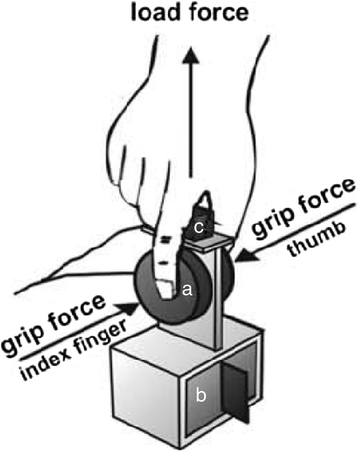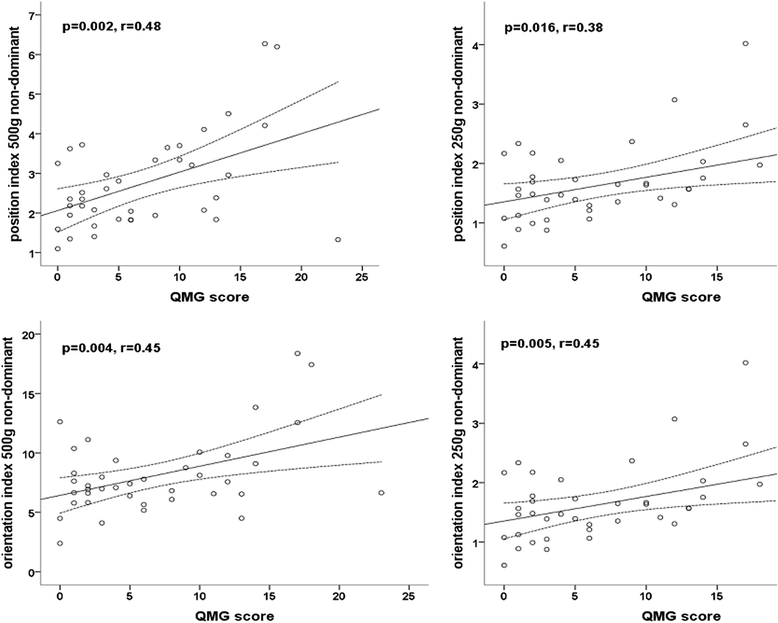Quantitative motor assessment of muscular weakness in myasthenia gravis: a pilot study
- PMID: 26701600
- PMCID: PMC4690227
- DOI: 10.1186/s12883-015-0517-8
Quantitative motor assessment of muscular weakness in myasthenia gravis: a pilot study
Abstract
Background: Muscular weakness in myasthenia gravis (MG) is commonly assessed using Quantitative Myasthenia Gravis Score (QMG). More objective and quantitative measures may complement the use of clinical scales and might detect subclinical affection of muscles. We hypothesized that muscular weakness in patients with MG can be quantified with the non-invasive Quantitative Motor (Q-Motor) test for Grip Force Assessment (QGFA) and Involuntary Movement Assessment (QIMA) and that pathological findings correlate with disease severity as measured by QMG.
Methods: This was a cross-sectional pilot study investigating patients with confirmed diagnosis of MG. Data was compared to healthy controls (HC). Subjects were asked to lift a device (250 and 500 g) equipped with electromagnetic sensors that measured grip force (GF) and three-dimensional changes in position and orientation. These were used to calculate the position index (PI) and orientation index (OI) as measures for involuntary movements due to muscular weakness.
Results: Overall, 40 MG patients and 23 HC were included. PI and OI were significantly higher in MG patients for both weights in the dominant and non-dominant hand. Subgroup analysis revealed that patients with clinically ocular myasthenia gravis (OMG) also showed significantly higher values for PI and OI in both hands and for both weights. Disease severity correlates with QIMA performance in the non-dominant hand.
Conclusion: Q-Motor tests and particularly QIMA may be useful objective tools for measuring motor impairment in MG and seem to detect subclinical generalized motor signs in patients with OMG. Q-Motor parameters might serve as sensitive endpoints for clinical trials in MG.
Figures


References
-
- Jaretzki A, 3rd, Barohn RJ, Ernstoff RM, Kaminski HJ, Keesey JC, Penn AS, et al. Myasthenia gravis: recommendations for clinical research standards. Task Force of the Medical Scientific Advisory Board of the Myasthenia Gravis Foundation of America. Neurology. 2000;55(1):16–23. doi: 10.1212/WNL.55.1.16. - DOI - PubMed
Publication types
MeSH terms
LinkOut - more resources
Full Text Sources
Other Literature Sources
Medical
Research Materials
Miscellaneous

